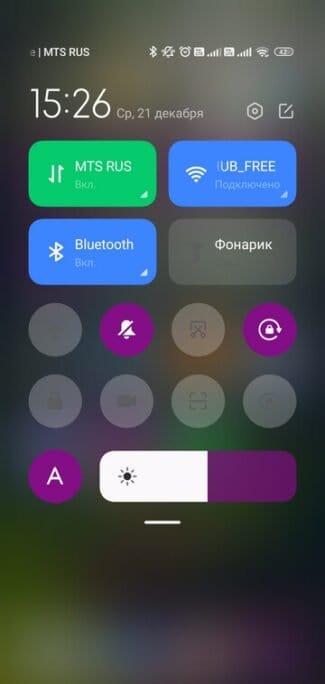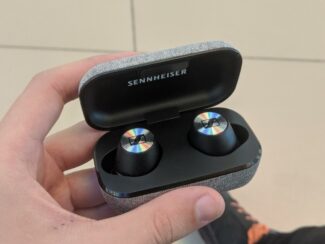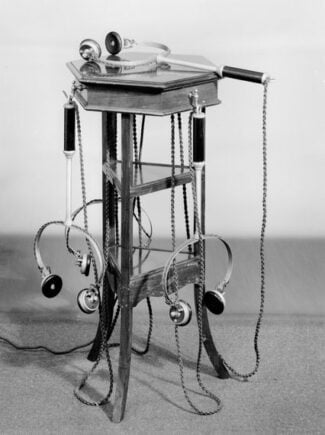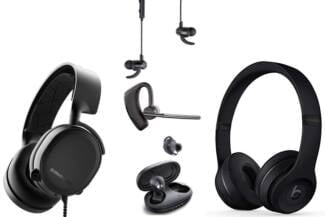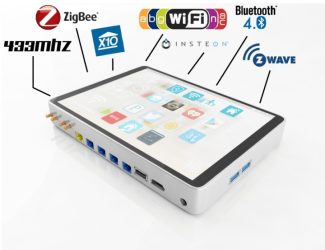These reviews are written by real customers iFi audio ZEN Air Blue external DACs in our store. We do not publish customer names for privacy reasons. Buying any product in our shop you also can add your feedback.

HI-FI AND HI-END COMPONENTS (MISCELLANEOUS) – TESTS
Phono stage IFi Zen Phono designed to work with MM (moving magnet) and MC (moving coil) cartridges, and is part of the constantly expanding catalog of Zen models (which so far have shown themselves quite well). This phono stage was chosen by us for review for this very reason, and having a lot of experience in testing other Zen components by iFi, we expect from it a good combination of quality and price.
Indeed, judging by the stated parameters, Zen Phono looks very good for a phono stage at such an affordable price (price in Russia on 03.2021 ~ 16,926 ₽). It has switchable gain (four values ranging from 36dB to 72dB) and an intrinsic noise level of -151dB (better than my own Cyrus Phono Signature, which I still consider quite a modern corrector, and one of the best in its, noticeably higher than the Zen Phono, price category). How, you don't already know what these numbers mean? Simply put, the Zen Phono photo detector can work with virtually all cartridges, except the most exotic ones, and still not produce noticeable noise.
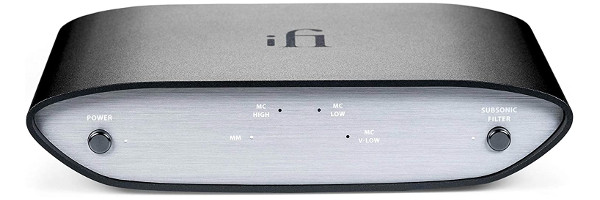
This was achieved because the Zen Phono is a combination of great engineering expertise combined with rather unusual solutions. The unit is powered by a 12V power supply, which is pulsed (1.2 MHz), and is also equipped with noise filtering circuitry. Meanwhile, the RIAA correction circuit of this unit uses TDK C0G capacitors (the same as in the DAC and Blue models) in parallel connection. The effect of using several components in this way is that obtaining the same parameters for both channels is easier and faster than when making circuits using conventional capacitors, and with no loss in the accuracy of the correction characteristics.
Sound quality
Before we begin, one point should be noted. Many of those who read this review, probably already thought: "My amplifier/receiver already has a built-in phono stage, why do I need another one? Indeed, you only need one such device to connect your vinyl player to your amplifier. However, the fact is that not all phono stages are the same. Adding 36 dB of gain (or even 50, 60 and 72 dB) to your input signal is fairly easy. However, adding it without introducing additional noise is much more difficult. I'm a big fan of music from vinyl records, but I hate the noise that sometimes occurs when listening to them, and I've spent considerable resources to get rid of it. Noise masks quiet sounds, and it also prevents me from enjoying pauses in the sound of music – and it reduces the perceived quality of the songs.
The Zen Phono is surprisingly quiet for a phono stage at such a modest cost. There is absolutely no noticeable noise in the speakers when there is no input signal, unless you put your ear to the speaker. And the effect of using the Zen Phono in conjunction with the Audio Technica AT-LP5X turntable was terrific. By itself, the built-in phono stage on this turntable isn't bad at all, but when you connect through the Zen, you can appreciate how much noise it actually made, which is now gone. The music sounded dynamic and powerful, with a great transfer of all the nuances in the full frequency range. The Centre Won't Hold album by Sleater Kinney was played energetically, with excellent drum and bass guitar delivery.
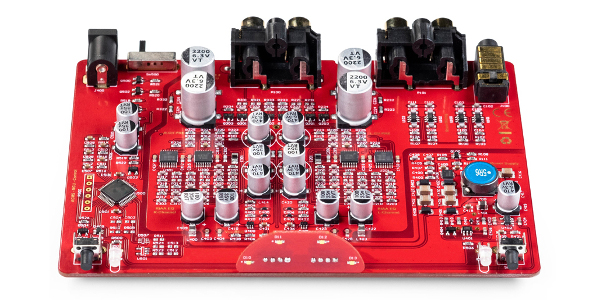
Switching from the LP5X turntable to the AVID Ingenium Twin gave amazing results. Using a combination of Rega RB330 and Goldring 2500, that is a combination of components from much higher price category than Zen Phono, allowed to demonstrate all the advantages of this model. The AVID turntable is probably the quietest I have in my possession, but even so, the Zen Phono does not add appreciable noise to the system. When working with an MC phono cartridge, it was even better.
Tags
![]()
Download the instruction manual
iFi audio ZEN Air Blue external DAC
The iFi audio ZEN Air Blue is a Bluetooth receiver equipped with the latest audio technology. The unit comes in a small package with a design that matches the rest of the series. At the same time, the neat appearance of iFi audio ZEN Air Blue and high quality manufacturing will allow the device to look organically in any Hi-Fi system. If you want, the Bluetooth-receiver can be placed hidden, because after the initial setup you won't have to do anything with it.
iFi audio ZEN Air Blue supports all current Bluetooth audio codecs – from the standard SBC to the increasingly popular LHDC/HWA. The device uses a Qualcomm 5100 series chip that provides a stable connection without interference or signal interruption. Unlike common Bluetooth receivers based on a single chip, the ZEN Air Blue has a separate DAC from ESS. This provides an extended dynamic range, a wide stereo image, and a balanced sound. Special measures have been taken in the converters to reduce jitter, making the sound detailed and musical. The iFi audio ZEN Air Blue circuitry uses Texas Instruments operational amplifiers and TDK precision capacitors.
The receiver is paired with wireless devices at the touch of a button. ZEN Air Blue can remember up to 8 connections, which is very convenient. You can control the device by means of two LEDs: one indicates the parameters of the digital stream (44/48 or 88/96 kHz) and the other shows the type of codec used. The model has a voice announcement of the operation modes, which can be disabled. RCA jacks are used to connect to a Hi-Fi system amplifier or an active speaker. Power is supplied by an external 5 V source.
Features of iFi audio ZEN Air Blue external DAC
| Type | Bluetooth receiver |
| Chipset | Qualcomm QCC 5100, Bluetooth 5.0 |
| Codec support | SBC, AAC, aptX, aptX HD, aptX Adaptive, aptX LL, LDAC, LHDC/HWA |
| Outputs | RCA |
| Signal to noise ratio | Over 109 dB (A-weighted) |
| Dynamic range | Over 109dB (A-weighted) |
| Frequency range | 20 Hz to 20 kHz (- 0.5 dB, 44.1 kHz), 1 Hz to 44 kHz (-3 dB, 88.2 kHz) |
| Harmonic distortion coefficient | less than 0.0015% |
| Output impedance | less than 50 ohm |
| Supply voltage | 5 V (DC), not less than 0.5 A |
| Dimensions (W x H x D) | 158 x 35 x 100 mm |
| Weight | 295 г |
Hello, will this DAC fit with the adapter: https://ifi-audio.com/products/ipower2/ ?
It says in the manual, that this DAC is powered by 5V/0.5A, and they advise to use iPower2 adapter. But on their website it says that iPower2 5 volt adapter gives out 2.5A, no other 5 volt adapter.

The use of this adapter is recommended by the manufacturer. 5 V (DC), the voltage should be at least 0.5A.
Good evening, I have a yamaha RX A-810 receiver without WIFI and BT receiver. I want to listen to music via BT from my phone or laptop. What do you recommend to buy: DAC or something else?

Hello! I use an old domestic Amphiton 101-01 amplifier for music listening. Is it possible to "introduce and make friends" with my smartphone, which is full of music? Will there be any problems with pairing the devices? Thank you.

Good day, Vladimir!
What smartphone model are we talking about?
You shouldn't have any problems with it. Bluetooth standard is interoperable between the versions. The difference in sound quality will be due to the codecs, by LDAC and APTXHD will be maximum sound quality. You except that you will need to take care of cable 2rca-5din for a correct connection.
How was the Zen Stream tested?
The IFi was wired and wireless with a connection to the iFi Zen DAC v2, Cambridge Audio Edge A, Cyrus i7 XR, and a combination of Chord Electronics Hugo Mscaler and TT2 DAC. It was used in Roon, UPnP and Tidal Connect modes, and the iPad Pro was used to test the application and AirPlay performance. Test music material was represented by FLAC, AIFF, DSD files, Tidal, Qobuz and Spotify services, as well as Internet radio.
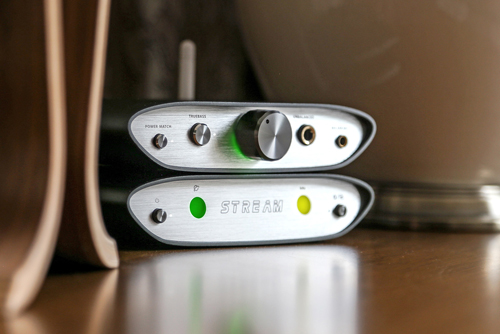
Sound quality
As you might have guessed, this section of our review won't be too long, since the iFi is just a transport. This means that the overall sound quality of the system will largely be determined by the equipment you connect to it. If you connect the Stream with the Zen DAC MkII, you will get a set costing about $800, which will be quite versatile and of high quality. And at the same time it will require only one electrical outlet to work, since the Stream can provide power to the DAC MkII.
However, I will once again note that amplifiers with built-in DAC are in my opinion the best partner for the Stream. Listening to the Cyrus i7 XR connected to the Roon Nucleus via USB and then to the Stream gave almost the same sound quality. This turns the Cyrus into a self-sufficient stereo system that, thanks to the Stream Wi-Fi connection, works anywhere. And it works reliably at the same time. Stream itself reconnects to the wireless network when you turn it off and on, and the USB connection is also established automatically.
Just as importantly, the Stream has more functionality in the form of Tidal Connect and AirPlay support that similar devices I've tested before don't have. I did not feel any benefit from Stream locking in one "mode", so the ability to transmit content to it from YouTube via AirPlay when Roon is not working, I really liked it.
Conclusion
My only real complaint about the iFi isn't really a flaw, so it requires some clarification. It has to do with the cost of the iDSD. The unit certainly performs well for the price, but whether it will justify it depends on the specific use case. If you're feeding its USB input from a multimedia PC, network transport or similar device, it's a good buy. But if you need to add a streamer (e.g. iFi Stream) to the iDSD to listen to music over the network, the cost of such a set will be comparable to a network player such as Arcam ST60. And although its DAC has more modest specifications than the iFi model, the unit is pleasant to use and sounds fantastic.
If your system just needs a state-of-the-art DAC, you should definitely give the iDSD a listen. Once again, this model is built on the same basic principles as the ZEN we've already mentioned many times. However, the iDSD represents a noticeable step forward in terms of features and sound, and will allow you to enjoy your music. Add to this a comprehensive set of supported standards, the ability to upgrade with the purchase of the iPower Elite power supply, and you get a model that is definitely worthy of our recommendation.
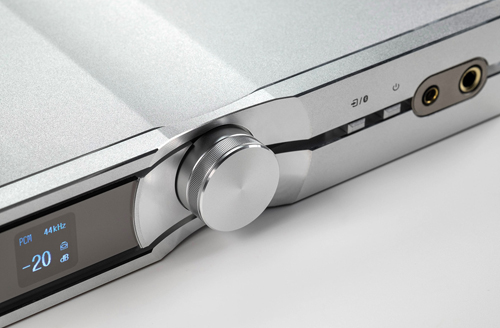
Verdict
The Neo iDSD performs exactly as we have come to expect from modern iFi Audio equipment. It has great features, a wide range of connections, and a quality build. If you're looking for a similar device in this price range, this iFi model is one of the best here.
Some competitors already have a streaming feature
Ratings:
Build quality: 8
Connections: 8
Ease of use: 9
Features: 9
Sound quality: 9
Quality/price: 9
Verdict: 9
| Key features of the iFi Audio Neo iDSD | |
|---|---|
| Non-linear distortion coefficient: | |
| Signal-to-noise ratio: | 112 dB(A) (unbalanced/balanced), 112 dB(A) (3.3V unbalanced/6.2V balanced, headphone output) |
| The possibility of increasing the sampling rate: | yes |
| PCM: | Up to 32 bit |
| Inputs: | USB3.0 B (compatible with USB2.0), optical, coaxial |
| Outputs: | RCA (adjustable, 2.2V fixed), XLR (adjustable, 4.4V fixed) |
| Dimensions (W x H x D): | 214 x 41 x 146 mm |
| Weight: | 970 г |
This review uses materials from www.avforums.com (translated from English – hifiNews.RU)
Original: https://www.avforums.com/reviews/ifi-audio-neo-idsd-dac-review.19435


